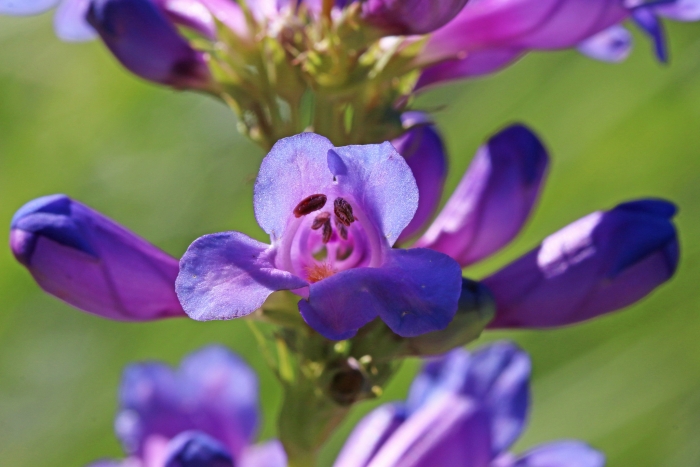Wasatch Penstemon
(Penstemon cyananthus)
Wasatch Penstemon (Penstemon cyananthus)
/
/

Andrey Zharkikh
CC BY 2.0
Image By:
Andrey Zharkikh
Recorded By:
Copyright:
CC BY 2.0
Copyright Notice:
Photo by: Andrey Zharkikh | License Type: CC BY 2.0 | License URL: https://creativecommons.org/licenses/by/2.0/ | Uploader: AndreyZharkikh | Publisher: Flickr |





























Estimated Native Range
Summary
Penstemon cyananthus, commonly known as Wasatch Penstemon, is a semi-deciduous perennial herb native to the mountainous regions of the western United States, particularly in the Rocky Mountains and the Great Basin. It thrives in open woodlands, as well as alpine and subalpine meadows, where it is exposed to full sunlight and well-drained soils. Wasatch Penstemon typically grows to a height of 1-2 feet (0.3-0.6 meters) and a width of 0.5-1 feet (0.2-0.3 meters), with a clumping form that makes it suitable for mass plantings.
The plant is admired for its tubular blue to purple flowers that bloom profusely in the spring and early summer, attracting pollinators such as bees and hummingbirds. The flowers are borne on upright stems and are quite showy, making it a popular choice for rock gardens, borders, and native plant landscapes. Wasatch Penstemon is drought-tolerant once established, making it a low-maintenance option for water-wise gardens. It prefers full sun to part shade and requires well-drained soils, avoiding wet or poorly drained conditions. While generally disease-resistant, it can be susceptible to root rot if overwatered. This species is not known for aggressive roots or significant disease problems, but gardeners should be aware of proper watering practices to ensure plant health.CC BY-SA 4.0
The plant is admired for its tubular blue to purple flowers that bloom profusely in the spring and early summer, attracting pollinators such as bees and hummingbirds. The flowers are borne on upright stems and are quite showy, making it a popular choice for rock gardens, borders, and native plant landscapes. Wasatch Penstemon is drought-tolerant once established, making it a low-maintenance option for water-wise gardens. It prefers full sun to part shade and requires well-drained soils, avoiding wet or poorly drained conditions. While generally disease-resistant, it can be susceptible to root rot if overwatered. This species is not known for aggressive roots or significant disease problems, but gardeners should be aware of proper watering practices to ensure plant health.CC BY-SA 4.0
Plant Description
- Plant Type: Herb
- Height: 1-2 feet
- Width: 0.5-1 feet
- Growth Rate: Slow
- Flower Color: Blue, Purple
- Flowering Season: Spring, Summer
- Leaf Retention: Semi-Deciduous
Growth Requirements
- Sun: Full Sun, Part Shade
- Water: Medium
- Drainage: Fast
Common Uses
Bee Garden, Bird Garden, Butterfly Garden, Deer Resistant, Drought Tolerant, Groundcover, Hummingbird Garden, Low Maintenance, Rabbit Resistant, Showy Flowers, Street Planting
Natural Habitat
Mountainous regions of the western United States, particularly in the Rocky Mountains and the Great Basin, open woodlands, as well as alpine and subalpine meadows
Other Names
Common Names: Blue Penstemon, Dark-Blue Beardtongue
Scientific Names: , Penstemon cyananthus, Penstemon cyananthus var. cyananthus, Penstemon glaber f. cyananthus, Penstemon glaber var. cyananthus,
GBIF Accepted Name: Penstemon cyananthus Hook.